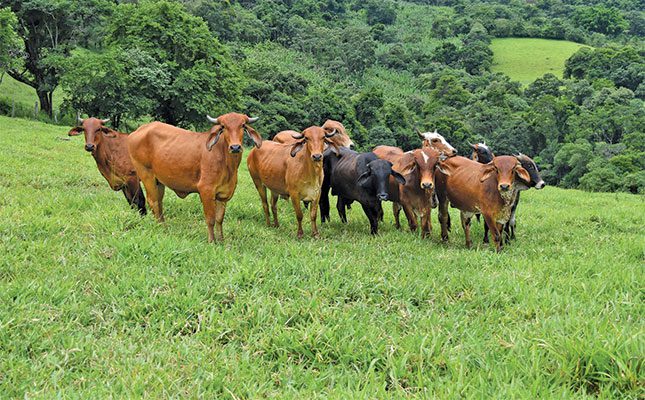Monitoring cattle body temperature is essential for maintaining herd health, productivity, and biosecurity. Accurate temperature readings enable early disease detection, improving treatment outcomes and reducing mortality rates.
Significance of Temperature Monitoring
Normal body temperature ranges vary with age:
- Calves (few days old): 38.5°C to 40°C
- Older calves: 38.5°C to 39.5°C
- Mature cattle: 37.5°C to 39.2°C
Deviations from these ranges can indicate health issues such as lumpy skin disease, redwater, pneumonia, or mastitis. Early detection through temperature monitoring allows for timely intervention, preventing disease spread and enhancing treatment effectiveness.
Best Practices for Measuring Temperature
- Choose the Right Thermometer: Digital rectal thermometers designed for veterinary use are recommended for their accuracy and quick readings.
- Preparation:
- Clean and disinfect the thermometer before use to prevent cross-contamination.
- Lubricate the tip with a suitable lubricant, such as petroleum jelly, for easier insertion.
- Animal Restraint: Safely restrain the animal in a handling facility to minimize stress and movement, ensuring accurate readings and safety for both the handler and the animal.
- Temperature Measurement:
- Gently lift the animal’s tail and insert the lubricated thermometer about 5 to 7.5 cm into the rectum for adult cattle (less for calves).
- Hold the thermometer at an angle to ensure contact with the rectal wall, avoiding fecal matter.
- Keep the thermometer in place until it signals completion, usually within 30 to 60 seconds.
- Post-Measurement:
- Record the temperature promptly.
- Clean and disinfect the thermometer after each use.
Frequency and Timing of Checks
- Routine Monitoring: Conduct temperature checks during regular handling sessions, which can be monthly or quarterly, to establish baseline health data.
- New Arrivals: Monitor the temperatures of newly introduced animals daily during their first week to ensure they are acclimating well and to detect any potential health issues early.
- Disease Outbreaks: Increase temperature monitoring frequency to daily or multiple times a day during disease outbreaks to assess the spread and impact.
- Optimal Timing: Perform temperature checks before mid-morning or late evening to avoid environmental temperature influences, ensuring more accurate readings.
Advanced Monitoring Technologies
Emerging technologies offer continuous and real-time temperature monitoring:
- Wireless Sensors: Devices that provide ongoing temperature data, allowing for immediate detection of anomalies.
- Infrared Thermography: Non-invasive method to assess surface temperatures, useful for identifying inflammation or circulatory issues.
- Smart Ear Tags: Monitor ear temperature and behavior, providing insights into health status and early disease detection.
While these technologies offer advanced monitoring capabilities, they can be costly. Digital rectal thermometers remain a cost-effective and reliable method for many farmers.
Economic Impact
Regular temperature monitoring leads to early disease detection, reducing treatment costs and mortality rates. Maintaining herd health through vigilant monitoring enhances productivity and profitability.
Common Mistakes to Avoid
- Improper Thermometer Use: Ensure the thermometer contacts the rectal wall and is not embedded in feces to avoid false readings.
- Inadequate Restraint: Properly restrain animals to prevent movement during measurement, which can lead to inaccurate readings.
By adhering to these best practices, farmers can effectively monitor cattle health, ensuring timely interventions and maintaining overall herd well-being.


